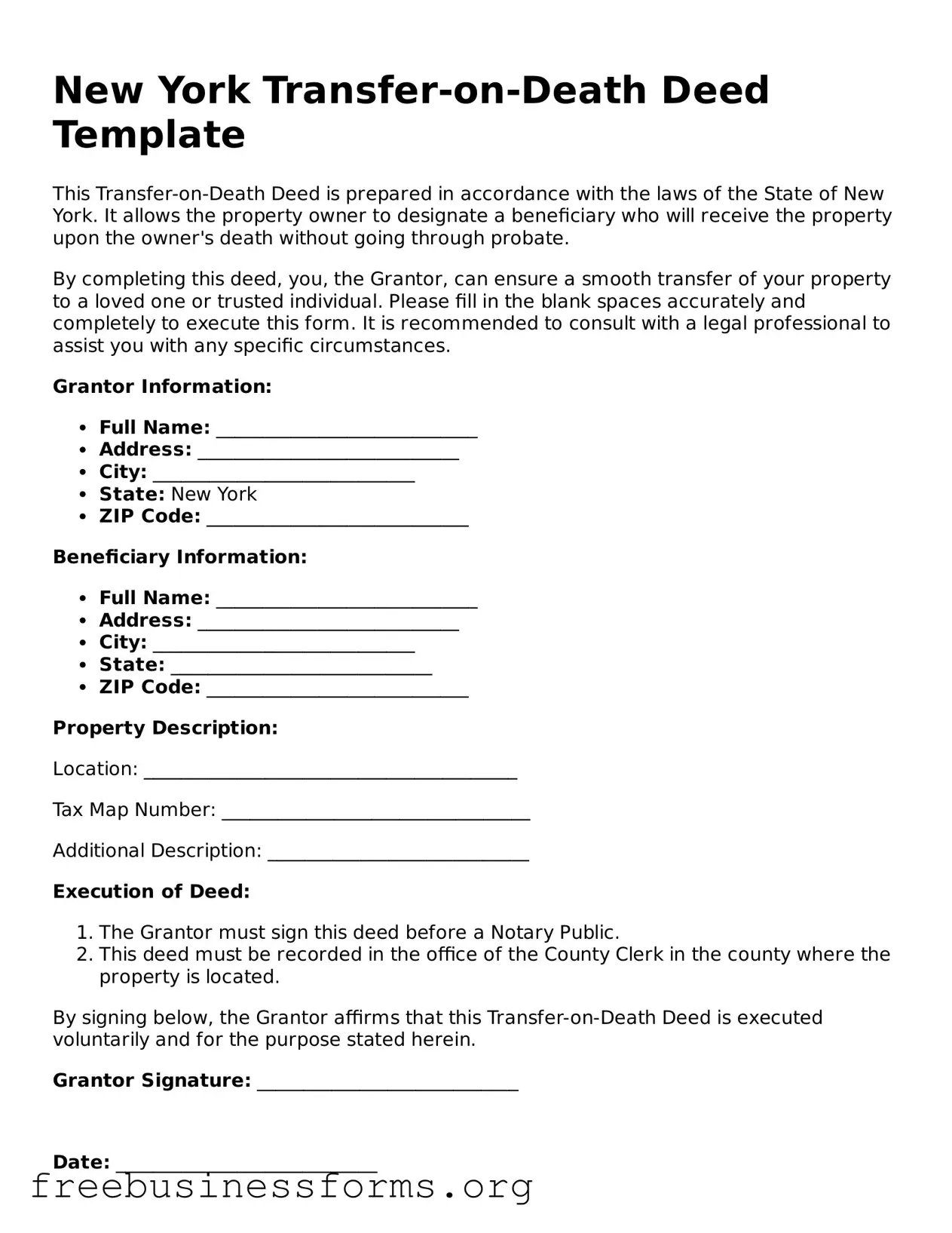New York Transfer-on-Death Deed Template
This Transfer-on-Death Deed is prepared in accordance with the laws of the State of New York. It allows the property owner to designate a beneficiary who will receive the property upon the owner's death without going through probate.
By completing this deed, you, the Grantor, can ensure a smooth transfer of your property to a loved one or trusted individual. Please fill in the blank spaces accurately and completely to execute this form. It is recommended to consult with a legal professional to assist you with any specific circumstances.
Grantor Information:
- Full Name: ____________________________
- Address: ____________________________
- City: ____________________________
- State: New York
- ZIP Code: ____________________________
Beneficiary Information:
- Full Name: ____________________________
- Address: ____________________________
- City: ____________________________
- State: ____________________________
- ZIP Code: ____________________________
Property Description:
Location: ________________________________________
Tax Map Number: _________________________________
Additional Description: ____________________________
Execution of Deed:
- The Grantor must sign this deed before a Notary Public.
- This deed must be recorded in the office of the County Clerk in the county where the property is located.
By signing below, the Grantor affirms that this Transfer-on-Death Deed is executed voluntarily and for the purpose stated herein.
Grantor Signature: ____________________________
Date: ____________________________
State of New York
County of_____________________:
On this ______ day of _______________, 20___, before me, a Notary Public, personally appeared ____________________________, who is known to me to be the person whose name is subscribed to the within instrument, and acknowledged that he/she executed the same.
Notary Public Signature: ____________________________
My Commission Expires: ____________________________
